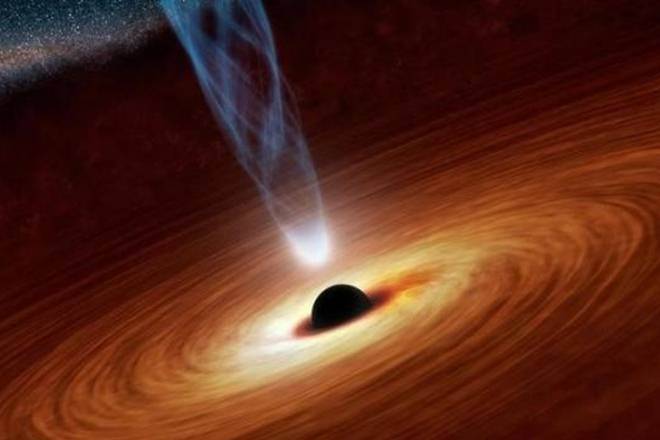How do black holes interact? Scientists managed to quite accurately predict their interactions. They did so by using their space-time warping effects, and suggesting the larger hole had a smooth “top.” The pairing black hole, known as OJ 287, lives from Earth for around 3.5 billion light-years. One of the holes weighs 18 billion times the Sun’s mass while the other weighs “just” 150 million times Sun masses.
Scientists have long known that the system that produces energy explosions leading to brightening twice every 12 years. The energy explosion is comparable to a trillion suns turning on at once in the host galaxy of the holes.
The best explanation for this unusual activity is that the smaller object repeatedly crashes through a gas and dust disk that accretes to its larger companion, heating the motivating material in the process to incredibly high temperatures. That flaring, however, is somewhat discontinuous. Often the brightening events occur as little as a year apart over the 12-year period; other times, as many as 10 years apart.
It refers to the difficulty of the direction that takes the small hole around its partner-a difficulty that the research team has now integrated into a highly sophisticated model.
The phenomenon was observed by the US space agency Nasa’s Spitzer infrared telescope, a lucky discovery as it turned out, because OJ 287 was at the time on the far side of the Sun to the Earth and thus out of reach of ground-based facilities. On the other side, Spitzer’s separation from Earth (160 million km) placed it in prime place. OJ 287’s observation is considered to be the best test of the no-hair concept yet. If significant anomalies had occurred the expected timing would not have performed so well.
Prof. Achamveedu Gopakumar, of the Tata Institute of Fundamental Research, India, collaborated with graduate student Lankeswar Dey on gravitational-wave additions to the model. The professor spoke about his “elation” after seeing the Spitzer data come in. He is now looking forward to the image of OJ 287 from the Event Horizon Telescope, which last year provided the first ever image of a black hole.

